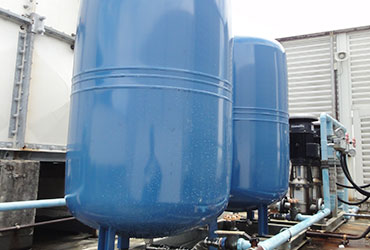My Thorough Manual to Managing Low Water Pressure in Your Home
My Thorough Manual to Managing Low Water Pressure in Your Home
Blog Article
This post down the page involving 9 Reasons for Low Water Pressure in Your House is rather insightful. Read it yourself and decide what you think of it.

Low tide pressure in your house can be a discouraging problem, influencing every little thing from showering to cleaning dishes. If you're experiencing weak water circulation, there are several feasible causes and services to explore. In this overview, we'll discuss common reasons for low tide stress and functional steps to attend to the problem successfully.
Intro to Low Water Stress
Low water stress happens when the flow of water from your faucets, showers, and various other components is weak than normal. This can make daily tasks extra difficult and less reliable. Comprehending the sources of low water stress is crucial to finding the right remedy.
Typical Reasons For Low Water Pressure
Pipe Obstructions
In time, pipes can come to be blocked with mineral deposits, debris, or particles, limiting the circulation of water. This is an usual problem in older homes with galvanized steel pipes.
Deterioration
Deterioration within pipes can cause leakages and minimized water stress. Rust buildup can constrict water circulation, especially in maturing plumbing systems.
Faulty Stress Regulatory Authorities
Pressure regulatory authorities are accountable for keeping constant water pressure in your house. If they malfunction, it can cause low water stress or uneven flow throughout the house.
Metropolitan Water Supply Issues
In some cases, the issue exists outside your home. Community water system issues, such as main line leakages or maintenance work, can temporarily lower water pressure in your location.
How to Identify Low Tide Stress
Inspecting Faucets and Components
Beginning by testing the water stress at various faucets and fixtures throughout your home. If the problem is isolated to particular areas, it may show local problems.
Checking Pipes
Examine noticeable pipelines for indications of leaks, rust, or clogs. Focus on any type of unusual sounds, such as knocking or rattling pipelines, which could show concerns within the plumbing system.
Consulting with a Plumber
If you're unable to identify the root cause of low water stress, take into consideration hiring a professional plumber to conduct a comprehensive evaluation. They can identify underlying issues and advise proper solutions.
Do It Yourself Solutions to Fix Low Water Stress
Cleansing Aerators and Showerheads
Mineral deposits can accumulate in aerators and showerheads, decreasing water circulation. Eliminate and clean these components consistently to boost water pressure.
Flushing Water Heater
Debris buildup in the water heater can limit flow and reduce performance. Purging the tank regularly helps remove sediment and preserve optimal performance.
Checking Stress Regulatory Authority
Make sure that the stress regulatory authority is functioning properly. Adjusting or replacing the regulatory authority can assist restore appropriate water stress throughout your home.
Clearing Up Clogs in Water Lines
For small obstructions, attempt using a plumbing serpent or chemical drainpipe cleaner to clear blockages in pipelines. Be cautious when using chemicals and comply with security guidelines.
When to Call a Professional Plumber
If do it yourself efforts fail to resolve the concern or if you believe substantial plumbing issues, it's best to seek aid from a licensed plumber. They have the experience and devices to address complicated problems securely and properly.
Preventive Measures to Keep Water Pressure
Normal Upkeep
Schedule regular upkeep for your plumbing system to avoid problems such as rust, leaks, and clogs. Dealing with minor problems early can help prevent even more substantial repairs later on.
Installing a Pressure Booster
Take into consideration mounting a stress booster pump to boost water stress in areas with constantly reduced circulation. This can be particularly beneficial for multi-story homes or homes with high-demand fixtures.
Monitoring Water Use
Bear in mind water usage practices and avoid overtaxing the plumbing system. Basic modifications, such as incredible showers and laundry lots, can aid maintain ample water pressure.
Verdict
Handling low water stress can be frustrating, but identifying the underlying reasons and executing appropriate solutions can recover ideal flow throughout your home. Whether it's cleaning up aerators, inspecting pipelines, or speaking with a plumber, taking proactive actions can ensure a stable supply of water for your daily demands.
How to Fix Low Water Pressure In Your Home
Municipal Water Supply Issues
Scheduled maintenance, high demand, and water main breaks are all potential causes for low water pressure within a city or county’s water lines. While there’s not much you can do to personally fix a problem with your city or county’s water supply system, you can play a big role in documenting the issue and alerting those who can.
How to fix it:
Ask your neighbors if they are experiencing any issues with low water pressure. If multiple homes are affected, it’s likely related to the city’s water line.
Contact the local Water Authority to see if there is any maintenance taking place that might be affecting your supply. Also let them know of your specific issues. If other homeowners report the same issues, they’ll know that there could be a larger issue to look into.
Faulty Fixtures
A damaged or clogged shower head, faucet or appliance is the first thing we’d suggest checking, especially if low water pressure appears to be isolated to a specific area of your home.
How to fix it:
First, turn off the main water supply to your home.
Check the affected appliances for build-up or debris. In the case of a faucet, you can simply unscrew the aerator at the tip of the faucet. Showerheads should be fully detached from the water pipe.
While the appliances are detached, you may want to check the water supply to determine if the fixtures were in fact the issue.
To clean, soak the showerhead or aerator in vinegar and brush off any visible debris.
Reattach the fixtures and check the water pressure again. If it is still low, there is likely a deeper issue at hand, which can be determined by a professional plumber.
Pipe Obstructions
Mineral deposits, rust or other debris within water pipes can lead to blockages or corrosion over time.
How to fix it:
When you think of a clog, you probably think of a drain clog. While there are many DIY solutions to clearing a drain, clogs in a water pipe will almost always require the help of a professional plumber. A plumber will be able to locate the affected pipe and clean out any debris or mineral deposit buildup. In severe cases, the pipe may need to be replaced. Your plumber might also recommend a water softening system to remove the minerals from your home’s water supply that can contribute to pipe blockages over time.
Plumbing Leak
Undetected water line leaks can divert water away from your residential pipes, reducing the water pressure in your fixtures.
How to fix it:
Check your water meter by turning off all water sources and monitoring the meter for any movement, which could be a clear indicator of a potential leak.
Check all visible pipes for signs of leaking, including water stains, active dripping or damp spots around the pipe.
Inspect fixtures, including faucets and showerheads, for any drips.
Test the pressure but recording the pressure with the main water valve shut off. Leave off for a few hours and test again. A significant drop in pressure is a clear sign of a leak.
https://kiddcoplumbing.com/plumbing-blog/how-to-fix-low-water-pressure/

How to Fix Low Water Pressure In Your Home
Municipal Water Supply Issues
Scheduled maintenance, high demand, and water main breaks are all potential causes for low water pressure within a city or county’s water lines. While there’s not much you can do to personally fix a problem with your city or county’s water supply system, you can play a big role in documenting the issue and alerting those who can.
How to fix it:
Faulty Fixtures
A damaged or clogged shower head, faucet or appliance is the first thing we’d suggest checking, especially if low water pressure appears to be isolated to a specific area of your home.
How to fix it:
Pipe Obstructions
Mineral deposits, rust or other debris within water pipes can lead to blockages or corrosion over time.
How to fix it:
When you think of a clog, you probably think of a drain clog. While there are many DIY solutions to clearing a drain, clogs in a water pipe will almost always require the help of a professional plumber. A plumber will be able to locate the affected pipe and clean out any debris or mineral deposit buildup. In severe cases, the pipe may need to be replaced. Your plumber might also recommend a water softening system to remove the minerals from your home’s water supply that can contribute to pipe blockages over time.
Plumbing Leak
Undetected water line leaks can divert water away from your residential pipes, reducing the water pressure in your fixtures.
How to fix it:
https://kiddcoplumbing.com/plumbing-blog/how-to-fix-low-water-pressure/
I was shown that write-up on 9 Reasons for Low Water Pressure in Your House through a friend on a different web address. Do you know about somebody who is fascinated about ? Please feel free to promote it. Thank-you for going through it.
Schedule A Service Call Report this page